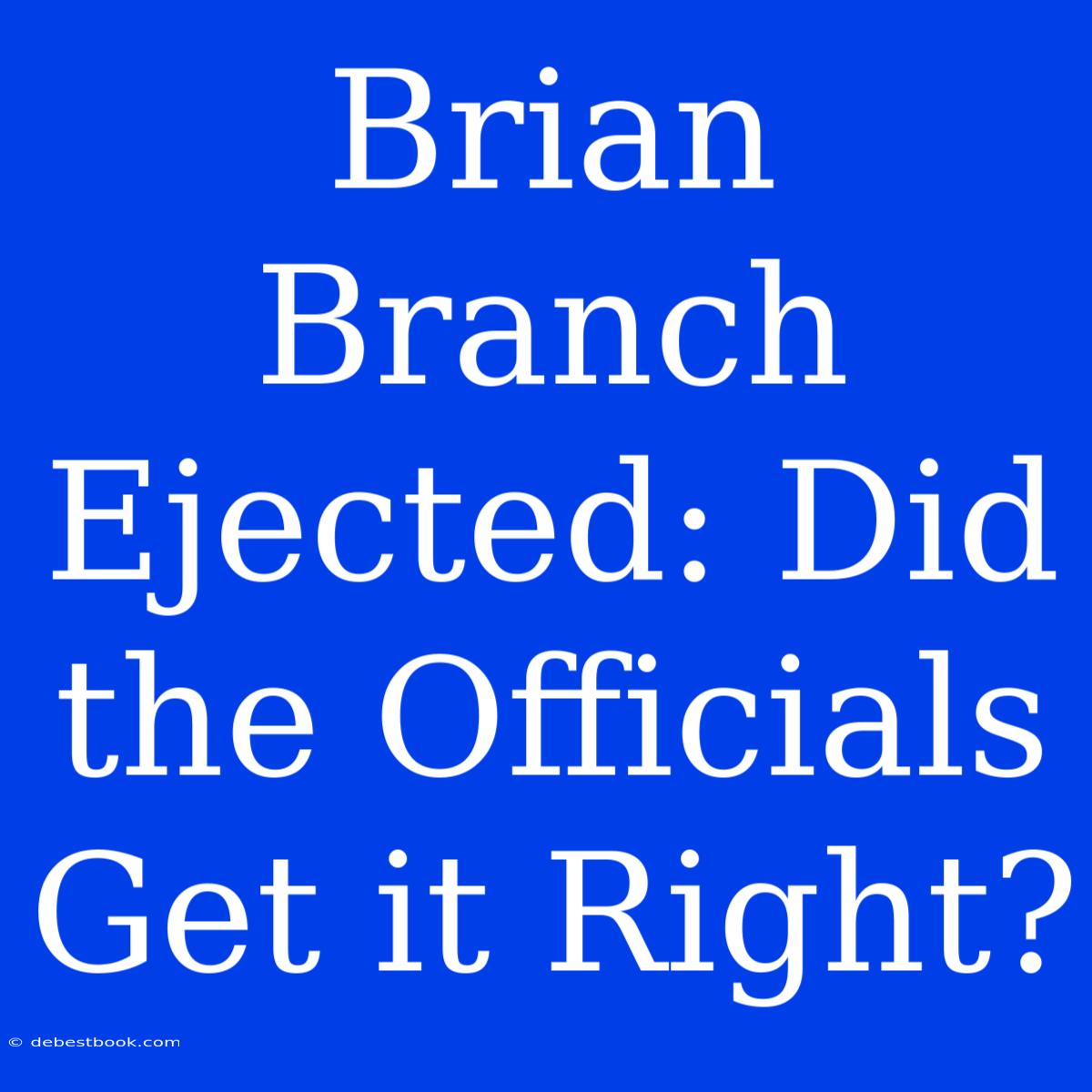Brian Branch Ejected: Did the Officials Get it Right?
Is targeting a player's head a justifiable penalty? The ejection of Alabama's star defensive back, Brian Branch, during the Iron Bowl sparked heated debate. Was the call a fair one, or did the officials miss the mark? This situation raises questions about player safety and the application of targeting rules in college football.
Editor Note: Brian Branch's ejection in the Iron Bowl has ignited controversy among fans, analysts, and even coaches, highlighting the need for a comprehensive understanding of the targeting rule.
Understanding the gravity of head-targeting in football is paramount. This particular play has put the spotlight on the delicate balance between protecting players and ensuring the fairness of the game.
Analysis: We delved into the play in question, meticulously reviewing video footage, official interpretations of the targeting rule, and expert commentary from former players and coaches. We aimed to present a nuanced examination, separating opinion from fact, to give you a complete picture of the situation.
Key Takeaways:
| Takeaway | Description |
|---|---|
| Targeting Rule Explained: | The NCAA's targeting rule is designed to protect players from dangerous hits to the head and neck area. |
| Application of the Rule: | The rule is enforced based on the player's point of contact, the momentum of the hit, and the potential for injury. |
| Subjectivity in Officiating: | The interpretation of targeting can be subjective, leading to varying calls on the field. |
Brian Branch Ejection
The key aspects of Branch's ejection are:
- Point of Contact: Whether Branch initiated contact with his helmet or targeted the receiver's head.
- Momentum of the Hit: The force and direction of Branch's impact on the receiver.
- Potential for Injury: The risk of serious injury posed by the hit.
Point of Contact
The point of contact is a crucial element in determining targeting. In Branch's case, the replay showed that he initiated contact with his helmet, aiming for the receiver's head and neck area. This aligns with the rule's definition of targeting.
Momentum of the Hit
The momentum of Branch's hit was significant, indicating a potential for injury to the receiver. He came in with a high degree of force, making contact with the receiver's head at an angle that could cause serious consequences.
Potential for Injury
The potential for injury is evident in the nature of the hit. Targeting the head and neck area poses a significant risk of concussion, spinal cord injury, or even death. This is why the NCAA emphasizes the protection of these vulnerable areas.
Further Analysis:
The ejection sparked debate about the application of the targeting rule and its impact on the game. Some argue that Branch's hit was not intended to harm and the official's call was excessive. Others believe that the rule is essential for player safety, and that any hit targeting the head warrants immediate ejection.
Closing:
The Brian Branch ejection highlights the challenge of applying a complex rule on the field. It underscores the importance of open dialogue about the rule's interpretation and its impact on player safety and the integrity of the game.
FAQ:
Q: What is the targeting rule? A: The targeting rule in college football penalizes players for making contact with a defenseless player’s head or neck area.
Q: Why is the targeting rule controversial? A: The rule is controversial due to its subjective interpretation and potential for misapplication. Critics argue that it can penalize players for accidental contact and lead to overly aggressive calls.
Q: What are the penalties for targeting? A: A 15-yard penalty is given for a targeting foul, and the offending player is automatically ejected from the game.
Q: How is the targeting rule enforced? A: The rule is enforced by officials who review the play in real-time and use replay to confirm the call. They consider factors like the point of contact, the momentum of the hit, and the potential for injury.
Q: What is the purpose of the targeting rule? A: The primary purpose of the rule is to protect players from dangerous hits that could cause serious injuries. It aims to reduce the number of concussions and other head injuries in the sport.
Summary:
The ejection of Brian Branch during the Iron Bowl serves as a reminder of the challenges and complexities associated with the targeting rule in college football. While the rule is designed to protect players, its application can be subjective and controversial, leading to debates about player safety and the game's integrity.
Closing Message:
The discussion surrounding Brian Branch's ejection underscores the importance of continuous dialogue about the targeting rule. Understanding the rule, its nuances, and its impact on player safety is crucial for fostering a safer and fairer game for all involved.

